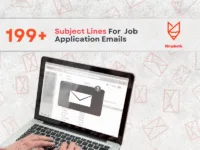Great subject lines can make or break your newsletter. They grab attention and increase the chances that your readers will open your email. You want your subject line to be catchy yet clear, inviting readers to find out more.
Crafting the perfect subject line requires a blend of creativity and strategy. Use action words, personalize when possible, and keep it concise. This will help your messages stand out in crowded inboxes.
Testing different approaches is key to discovering what resonates with your audience. Analyze open rates and tweak your lines based on what works best. Engaging subject lines can lead to higher engagement and more loyal readers.
Fundamentals of Newsletter Subject Lines
Newsletter subject lines are crucial for grabbing attention and encouraging readers to open your emails. Key elements include making a strong first impression, keeping the character count in mind, using personalization, and ensuring clarity and brevity.
First Impressions Matter
Your subject line is the first thing subscribers see. It can determine whether they open your email or ignore it. A strong subject line should evoke curiosity or provide a clear benefit.
Tips for strong first impressions:
- Use Action Words: Start with verbs that prompt action, like “Discover,” “Join,” or “Learn.”
- Create Urgency: Phrases like “Limited Time Offer” can encourage faster opens.
- Be Authentic: Ensure the tone matches your brand’s voice.
These strategies help make a positive initial impact and improves engagement.
Character Count Best Practices
The number of characters in your subject line matters. Research shows that shorter subject lines have a higher open rate. Aim for 40 to 60 characters.
Consider these points:
- Mobile Friendliness: Many people check emails on their phones. Keep subject lines concise so they fit well on small screens.
- Make the First Few Words Count: Place the most important information at the beginning.
- Avoid All Caps: This can come off as shouting and may turn people away.
By keeping an eye on character count, you enhance readability and improve your chances of grabbing attention.
The Role of Personalization
Personalization can significantly impact your open rates. Including the subscriber’s name or specific interests makes the email feel tailored to them.
Effective personalization tips:
- Use Names: “John, Check Out Our New Products!” feels more inviting than a generic greeting.
- Segment Your Audience: Send targeted emails based on previous interactions or preferences.
- Use Location Data: Mention local events or offers to capture interest.
Personalized subject lines not only improve clicks but also foster stronger relationships with your subscribers.
Clarity and Brevity
Your subject line should communicate the email’s content clearly. Avoid vague terms that could confuse the reader.
Keys to clarity and brevity include:
- Be Direct: State what the email offers without excess words.
- Eliminate Jargon: Use simple language that everyone can understand.
- Test and Iterate: Monitor the performance of different subject lines to see which resonate best with your audience.
Making your subject lines clear and to the point can increase your email’s success.
Designing Effective Newsletter Subject Lines
Creating strong subject lines is crucial for getting your newsletters opened. A good subject line grabs attention and encourages readers to click. Focus on active language, clear structures, and a sense of urgency to boost your open rates.
Using Action-Oriented Verbs
Action-oriented verbs make your subject lines more dynamic and engaging. Words like “Join,” “Discover,” and “Unlock” prompt readers to take action. Instead of saying, “New tips for your garden,” try “Unlock Gardening Secrets Today.”
Using strong verbs makes your message direct and exciting. Your audience can easily see what they will gain by opening your email. This approach creates anticipation and encourages immediate action.
To help you, here are some effective action verbs:
- Join
- Explore
- Boost
- Transform
- Save
Incorporating these verbs into your subject lines can significantly enhance reader interest.
Incorporating Numbers and Lists
Using numbers in subject lines provides clarity and structure. People naturally respond to lists and quantifiable information. For example, “5 Easy Ways to Improve Your Health” often performs better than “Ways to Improve Your Health.”
Numbers stand out in a crowded inbox. They signal quick, digestible content. Readers expect specific, actionable advice, which numbers can effectively convey.
Here are a few tips for using numbers:
- Use odd numbers for curiosity (e.g., 7 vs. 6).
- Limit the count to three to five for concise lists.
- Make sure the list aligns with the email content.
Numbered subject lines can increase the chances of your emails being noticed and opened.
Leveraging Curiosity and Intrigue
Curiosity is a powerful motivator. Subject lines that tease information can prompt readers to click to learn more. Phrases like “What You Didn’t Know About…” or “The Secret to Better Sleep” create a sense of mystery that draws readers in.
Keep it short. A subject that piques interest without revealing all the details encourages readers to find out more. Intriguing subject lines invite engagement and exploration.
To craft intriguing subject lines:
- Ask a question that addresses a common problem.
- Use words like “secret,” “hidden,” or “unknown.”
- Avoid giving away too much; keep some information back.
Intrigue can significantly increase your open rates.
Employing FOMO and Urgency
Fear of missing out (FOMO) and urgency can drive your audience to act quickly. Phrases like “Limited Time Offer” or “Only a Few Spots Left” instill a sense of urgency. This can prompt readers to open your email right away.
You can also create urgency by highlighting deadlines or special events. For example, “Ends Tonight!” creates pressure to act.
Here are some ways to incorporate urgency:
- Use time-sensitive phrases.
- Highlight exclusivity or limited access.
- Create countdowns to events or offers.
Using FOMO can effectively push readers to engage with your content.
Psychological Triggers in Subject Lines
Using the right psychological triggers in your subject lines can significantly affect your open rates. You can create a connection with your audience by building trust, influencing emotions, and offering exclusivity.
Trust and Authority Cues
Incorporating trust signals in your subject lines is vital. You can include the name of a recognized expert or use testimonials. This tells your audience they are getting valuable information from a reliable source.
Consider adding phrases like “Research shows” or “Join experts”. These phrases help to establish credibility. When recipients see these cues, they are more likely to feel confident opening your emails.
Another approach is to mention awards or recognitions in your subject lines. For example, “Award-winning tips on…” can greatly enhance your authority.
Emotional Appeals
Emotions drive many decisions. To tap into this, use language that resonates with your audience’s feelings. Words like “exciting,” “heartwarming,” or “empowering” can trigger emotional responses.
Ask questions that provoke curiosity, such as “Have you ever felt…?” or “What if you could…?” This engagement draws readers in and encourages them to click.
Surprise is another effective emotional trigger. Phrases like “You won’t believe…” or “Discover the secret…” can make your audience eager to learn more. Understanding the emotions of your audience helps you craft better subject lines.
Exclusivity and Special Offers
Creating a sense of exclusivity can drive more opens. You can use phrases like “Members only” or “Limited time offer” to make your audience feel special. This can motivate them to open your emails quickly.
Highlighting special promotions or discounts is also important. Use clear and direct language such as “Save 20% today!” or “Exclusive deal just for you!” This clarity prompts immediate action from your readers.
Using scarcity effectively is key. Adding reminders like “Only 3 left!” or “Offer ends soon” creates urgency. This can greatly increase the likelihood that your audience will open your email right away.
Testing and Optimization Strategies
Testing and optimization are key to improving your newsletter subject lines. They help you find what works best and adapt to your audience’s preferences.
A/B Testing Essentials
A/B testing is a method that lets you compare two subject lines to see which one gets a better response. You send one version to half of your audience and the other to the remaining half.
Consider these steps:
- Choose Your Variable: Focus on one element, like length or tone.
- Set a Sample Size: Make sure your audience is large enough to get clear results.
- Analyze Results: Look at open rates and engagement to determine the winner.
Make this a regular practice to refine your strategies.
Analyzing Performance Metrics
Analyzing metrics shows you how well your subject lines perform. A few important metrics to watch include:
- Open Rates: This tells you how many people opened your email.
- Click-Through Rates (CTR): This shows how many clicked links within your email.
- Conversion Rates: This indicates how many people took action after clicking.
Use tools like Google Analytics or your email service provider’s dashboard. Review these metrics regularly to adjust your messaging for better results.
Continuous Improvement Cycle
Improvement should be ongoing. After analyzing your data, implement changes based on your findings.
Here are steps to follow:
- Test New Ideas: Roll out new subject lines based on what worked in the past.
- Gather Feedback: Encourage your audience to share what they like or dislike.
- Review Regularly: Check performance metrics frequently to identify trends.
This cycle helps you adapt and keep your audience engaged. By continuously optimizing, you’ll create effective subject lines that drive better engagement.
Segmentation and Targeting
Effective segmentation and targeting help you reach the right audience with your newsletter. It lets you create messages that connect better and drive engagement.
Understanding Your Audience Segments
Start by dividing your audience into smaller groups based on their interests, behaviors, or demographics. This can include categories like age, location, or purchasing behavior.
You can create segments using tools like:
- Geographic Location: Tailor content to local events or offers.
- Purchase History: Offer products based on what subscribers have previously bought.
- Engagement Level: Separate active readers from those who rarely open emails.
Knowing your segments helps you focus your content on what matters to each group. This makes your newsletters more relevant and encourages more clicks and conversions.
Tailoring Messages to Subscriber Behavior
Once you identify your segments, analyze how subscribers interact with your newsletters. Look for patterns in open rates and click-through rates.
You can adjust your messaging with tactics such as:
- Personalized Subject Lines: Use names or interests to grab attention.
- Dynamic Content: Display different content based on the subscriber’s previous actions.
- A/B Testing: Try different approaches to see what works best for each segment.
Tailoring messages based on behavior increases the chances of engagement. This method helps maintain subscriber interest and improves your overall email performance.
Regulatory Compliance and Best Practices
Staying compliant with regulations is vital when crafting newsletter subject lines. You need to follow specific laws to avoid penalties and maintain your brand’s reputation. It’s important to understand key regulations like the CAN-SPAM Act and GDPR.
Adhering to CAN-SPAM Act
The CAN-SPAM Act sets rules for commercial emails, including those with newsletters. To comply, you must include your physical address in every email.
Key requirements:
- Clear opt-out option: Provide an easy way for recipients to unsubscribe.
- Truthful subject lines: Accurately reflect the content of the email.
- No misleading headers: Use legitimate “From” names and email addresses.
Ignoring these rules can lead to fines ranging from $11,000 per violation. Always ensure recipients know what to expect when they open your emails.
GDPR Considerations for Subject Lines
If your audience includes individuals in the EU, you need to follow GDPR. This regulation emphasizes privacy and requires consent before sending marketing emails.
Key points to consider:
- Explicit consent: Ensure that your subscribers have actively agreed to receive emails.
- Data protection: Keep personal data secure and use it only for agreed purposes.
- Right to access: Inform subscribers they can request information on how their data is used.
When writing subject lines, avoid using manipulative language. Transparency is important. Always respect your readers’ rights to control their personal data.
Creative Inspiration and Idea Generation
Finding creative ways to engage your audience starts with great subject lines. Explore themes that connect with your readers’ experiences and interests. Use methods like seasonal ideas and industry benchmarks to elevate your newsletters.
Seasonal and Event-Based Themes
Using seasonal themes is a smart way to grab attention. Align your subject lines with holidays, weather changes, or local events. For instance, you can create lines like:
- “Get Ready for Fall with These Cozy Tips!”
- “Last-Minute Halloween Ideas for Your Family”
Think about what your audience is interested in during different times of the year. Consider creating countdowns, exclusive offers, or themed content to create urgency. This not only makes your newsletters relevant but also encourages readers to open them.
Benchmarking Against Industry Standards
Looking at what works in your industry can spark new ideas. Research successful subject lines from competitors or popular brands. List your findings and analyze why they work. You might notice patterns in phrasing, tone, or specific keywords that catch people’s eyes.
For example, you could create segments for:
- Topic focus: What themes resonate most?
- Tone: Are most lines casual or formal?
Try experimenting with your subject lines based on this data. Don’t hesitate to tweak and test different approaches. You could discover new ways to enhance engagement based on what others in your field are doing.
Leveraging Technology and Tools
Using technology and tools can significantly improve your newsletter subject lines. Various resources are available to help you craft engaging and effective titles that grab attention.
Subject Line Tester Tools
Subject line tester tools help evaluate the effectiveness of your titles. They analyze different elements, such as word choice and length, to suggest improvements. Some popular tools include:
- CoSchedule Headline Analyzer: It scores your subject line based on readability and emotional appeal.
- SubjectLine.com: This tool gives instant feedback and a score based on tested subject lines.
- Sharethrough Headline Analyzer: It measures your title’s drawing power and its likelihood of generating clicks.
- Mailchimp Subject Line Checker: A simple tool that provides suggestions to optimize your subject lines.
- Optimizely: With A/B testing features, it helps you find which headlines perform better with your audience.
These tools give you a valuable data-driven approach to improve your subject line performance.
Artificial Intelligence Applications
Artificial intelligence (AI) can transform how you create subject lines. AI tools analyze large data sets to suggest headlines that resonate with your audience. Some useful AI applications are:
- Phrasee: This tool generates subject lines using natural language processing, focusing on language that drives engagement.
- Persado: It uses AI to optimize your messaging by testing language variants to find the best performers.
- Copy.ai: This AI tool helps brainstorm catchy subject lines in seconds, eliminating writer’s block.
- Writesonic: Offers AI-generated copy tailored to your brand voice, including newsletter subject lines.
- ChatGPT: You can use this tool to brainstorm ideas, refine titles, and test different versions for appeal.
By using AI, you can save time and create more compelling subject lines that capture reader interest.
Catchy titles
Creating catchy titles is essential for grabbing attention. Here are 50 ideas to help you entice readers to open your newsletter:
- Unlock Secrets to Better Living
- Your Go-To Guide for Weekend Fun
- Discover Hidden Gems in Your City
- Boost Your Productivity with These Tips
- Transform Your Morning Routine
- Exclusive Offers Just for You
- The Ultimate Checklist for Mindfulness
- Secret Recipes Straight from the Chef
- Join Our Adventure: Travel Tips Inside
- Ten Hacks to Save Money Now
- Get Inspired: Quotes to Live By
- Your Path to Wellness Starts Here
- Must-See Events Happening This Month
- Fun Facts You Didn’t Know About…
- Behind the Scenes: How We Do It
- DIY Projects You Can Start Today
- How to Make Your Home Cozier
- Essential Tools for Every Gardener
- Get Fit with These Simple Exercises
- Celebrate with Delicious Party Ideas
- Prepare for Success with These Strategies
- A Sneak Peek into Next Month’s Issue
- The Best Books You Should Read Now
- Spring Cleaning Tips You’ll Love
- New Trends to Watch This Year
- Join Our Community and Connect
- Favorite Movies to Stream This Weekend
- Learn a New Skill in Just 30 Days
- Must-Have Items for Your Wardrobe
- Your Monthly Dose of Positivity
- Creative Ways to Use Leftovers
- A Beginner’s Guide to Meditation
- Tips for Sustainable Living
- Your Dream Vacation Awaits
- Secrets from Industry Experts
- How to Cultivate a Growth Mindset
- Embrace Change with Confidence
- Fun Activities for Family Time
- The Best Apps for Everyday Life
- Time-Saving Tips for Busy People
- Curated Playlist for Your Workout
- Explore the Wonders of Nature
- Your Guide to a Successful Career
- Top Travel Destinations for 2025
- Inspiring Stories from Real People
- Fun Challenges to Try This Month
- How to Host a Perfect Dinner Party
- Must-Try Foods From Around the World
- Easy Crafts to Brighten Your Day
- Become the Best Version of You
Use these titles as inspiration to engage your audience. Each title is designed to spark curiosity and invite readers to explore your content.
Conclusion
Creating effective newsletter subject lines is essential for grabbing attention. A strong subject line can increase open rates and make your content stand out.
Here are some tips to remember:
- Keep it short: Aim for 6-10 words.
- Use action words: Encourage readers to take action.
- Personalize when possible: Use the recipient’s name or interests.
Testing different subject lines helps you find what works best. Track open rates to learn which lines perform well.
You can also create a sense of urgency. Phrases like “Act now” or “Limited time offer” can inspire immediate action.
Remember to stay true to your content. Misleading subject lines may boost open rates but can damage trust in the long run.
Focus on clarity and relevance. The subject line should reflect the content inside the newsletter. This builds reliability and keeps readers engaged.
By applying these strategies, you can improve your newsletter performance and foster a loyal readership.




